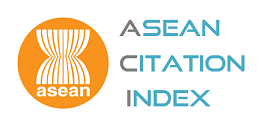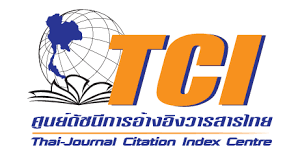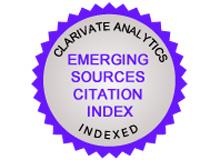Positive Attitude Development and Reducing Bullying Behavior among Early Thai Adolescents through a Prevention Program: A Quasi-Experimental Study
DOI:
https://doi.org/10.60099/prijnr.2025.271073Keywords:
Attitudes, Bullying behavior, Bullying Prevention Program, early adolescentsAbstract
Bullying in modern society is increasingly markedly by aggressive behaviors, particularly among adolescents, with schools as the main setting. Promoting positive attitudes towards anti-bullying can raise awareness about bullying and strengthen the intention to refrain from engaging in such behavior. This quasi-experimental study examined the effects of the Bully Prevention Program on positive attitudes and intentions to refrain from bullying behavior. Two large secondary schools out of five located in the south of Thailand, were randomly selected and randomly assigned to the experiment and control setting. Random sampling was then used to recruit the students from each school according to the inclusion criteria and to match them by gender. Participants in the experimental group (n = 40) received the intervention program in addition to routine education, and a control group (n = 40) received only routine education from teacher at school. The instruments used for data collection were the Attitude Toward Bullying Behavior Questionnaire and the Anti-Bullying Intention Questionnaire. Data were analyzed using descriptive statistics, chi-square tests, paired t-tests, and MANCOVA.
The results showed that immediately after receiving the Bullying Prevention Program, the experimental group had significantly lower inaccurate attitudes toward bullying and had a significantly higher intention to refrain from bullying than at the baseline and of the control group. Thus, the Bullying Prevention Program effectively fosters positive attitudes towards anti-bullying and strengthens the intention to avoid such behavior among early adolescents. Nurses, school teachers, and parents should incorporate this program to promote accurate attitudes and behavior in adolescents. However, further testing in various schools with randomized controlled studies is needed before it can be used nationally.
References
Hung JY, Lee S. Are bully-victims homogeneous? Latent class analysis on school bullying. Child Youth Serv Rev. 2020;112(2):104922. doi: 10.1016/j.childyouth.2020.104922.393
Department of Mental Health. Bullying is not a child’s play: violence waiting to erupt [Internet]. 2020 [cited 2024 Sep 1]. Available from: https://www.dmh.go.th/news-dmh/view.asp?id=30150 (in Thai).
Sokantat N, Kanyajit S, Poonyarith S. Thai culture: the foundation of school bullying. Inter J Crim Justice Sci. 2021;16(2):369-84. doi: 10.5281/zenodo.4756082.
Chumpalee S, Thaweekoon T. Bullying behavior among middle school students in a province of Central Thailand. J Psychiatr Nurs Ment Health. 2019;33(3):128-48. Available from: https://he02.tci-thaijo.org/index.php/JPNMH/article/view/232462/158839 (in Thai).
Gabrielli S, Rizzi S, Carbone S, Piras EM. School interventions for bullying–cyberbullying prevention in adolescents: insights from the UPRIGHT and CREEP projects. Int J Environ Res Public Health. 2021;18(21):11697. doi: 10.3390/ijerph182111697.
Khongsanae S. The issue of bullying in educational institutions. Academic Office, Office of the Secretariat of the House of Representatives; 2018 (in Thai).
Panyawong W, Santitadakul R, Phawasuthiphaisit C. Prevalence of depression and suicide risk in Thai adolescents. J Ment Health Thai. 2019;28(2):136-49. Available from: https://he01.tci-thaijo.org/index.php/jmht/article/view/210760 (in Thai).
Institute for the Promotion of Teaching Science and Technology. School bullying from the perspective of PISA [Internet]. 2020 Aug 3 [cited 2024 Aug 27]. Available from: https:// www.ipst.ac.th/pisa-thailand/school-bullying-from-the-perspective-of-pisa (in Thai).
Esteban ANP, Contreras CCT, Rodriguez SPO, Aldana MSC, Bueno LMD, Silva BADPN. Bullying in adolescents: role, type of violence and determinants. Rev Esc Enferm USP. 2020; 54:e03625. doi: 10.1590/S1980-220X2019026003625.
Upamairat T, Kongsuwan V, Suttharangsi W. The effect of a self-regulation program on attitudes toward violence and self-control behavior in adolescent students. J Psychiatr Nurs Ment Health. 2019;33(2):13-28. Available from: https://he02.tci-thaijo.org/index.php/JPNMH/article/view/212203/147217 (in Thai).
Stoddard SA, Varela JJ, Zimmerman MA. Future expectations, attitudes toward violence, and bullying perpetration during early adolescence: a mediation evaluation. Nurs Res. 2015; 64(6):422–33. doi: 10.1097/NNR.0000000000000127.
Man X, Liu J, Xue Z. Does bullying attitude matter in school bullying among adolescent students: evidence from 34 OECD countries. Children. 2022;9(7):975. doi: 10.3390/children9070975.
Khongthong K. Behavioral intention using technology of baby boomers generation and X generation [master’s thesis]. [Bangkok]: Rajamangala University of Technology Krungthep; 2018 (in Thai).
Sirisomrutai C. Perception, attitude, and behavioral intention towards cyberbullying. Independent study, Master of Communication Arts: Bangkok University; 2017 (in Thai).
Ajzen I. From intentions to actions: a theory of planned behavior. In: Kuhl J, Beckmann J, editors. Action control: from cognition to behavior. New York: Springer; 1985. pp. 11-39. doi: 10.1007/978-3-642-69746-3_2.
Kaewsa-ard P. Attitude and learning process that influence work stress of middle managers in the information technology group [master’s thesis]. [Pathum Thani]: Rajamangala University of Technology Thanyaburi; 2018 (in Thai).
Einarsen K, Nielsen MB, Hetland J, Olsen OK, Zahlquist L, Mikkelsen EG, et al. Outcomes of a proximal workplace intervention against workplace bullying and harassment: a protocol for a cluster randomized controlled trial among Norwegian industrial workers. Front Psychol. 2020;11:2013. doi: 10.3389/fpsyg.2020.02013.
Niempia T, Jariya W. The effectiveness of the program for resisting amphetamine use among prisoners at Phitsanulok Province prisons. Res Dev Health Syst J. 2020;13(1):700-8 (in Thai).
Jiwcharoen P. Early adolescent violence prevention program [master’s thesis]. [Nakhon Pathom]: Mahidol University; 2015 (in Thai).
Lertchamchongkul P, Tantixalerm C. Effects of intervention fostering students’ attitude towards their acceptance of peers with special needs. J Res Dev Spec Educ. 2019;8(1):105-17. Available from: https://ejournals.swu.ac.th/index.php/rise/article/view/11493 (in Thai).
Buasuwan R, Auemaneekul N, Powwattana A. Applying theory of planned behavior program on aggressive behaviors among secondary school male students in Bangkok. J Health Nurs Res. 2020;36(1):136-48. Available from: https://he01.tci-thaijo.org/index.php/bcnbangkok/article/view/242291 (in Thai). 394
Inpanao W, Phuphaibul R, Kongsaktrakul C. Effects of the media computer games “KID...THINK” Program on attitude, norms, and perceived behavioral control on sexual risk behavior of the 6th grade students. BCNUT J Nurs. 2020;12(1):107-21. Available from: https://he01 tci-thaijo.org/index.php/unc/article/view/243594/165398 (in Thai).
Yosep I, Hikmat R, Mardhiyah A. School-based nursing interventions for preventing bullying and reducing its incidence on students: a scoping review. Int J Environ Res Public Health. 2023;20(2):1577. doi: 10.3390/ijerph20021577.
Roca-Campos E, Duque E, Rios O, Ramis-Salas M. The Zero Violence Brave Club: a successful intervention to prevent and address bullying in schools. Front Psychiatry. 2021;12: 601424. doi: 10.3389/fpsyt.2021.601424.
Sainz V, Martín-Moya B. The importance of prevention programs to reduce bullying: a comparative study. Front Psychol. 2023;13:1066358. doi: 10.3389/fpsyg.2022.1066358.
Peng Z, Li L, Su X, Lu Y. A pilot intervention study on bullying prevention among junior high school students in Shantou, China. BMC Public Health. 2022;22(1):262. doi: 10. 1186/s12889-022-12669-0.
Díaz-Caneja CM, Martín-Babarro J, Abregú-Crespo R, Huete-Diego MÁ, Giménez-Dasi M, Serrano-Marugán I, et al. Efficacy of a web-enabled, school-based, preventative intervention to reduce bullying and improve mental health in children and adolescents: study protocol for a cluster randomized controlled trial. Front Pediatr. 2021;9:628984. doi: 10.3389/fped.2021.628984.
Yosep I, Hikmat R, Mardhiyah A, Kurniawan K, Amira I. A scoping review of the online interventions by nurses for reducing the negative impact of bullying on students. J Multidiscip Healthc. 2023;16:773-83. doi: 10.2147/ JMDH.S406050.
Jueajinda S, Stiramon O, Ekpanyaskul C. Social intelligence counseling intervention to reduce bullying behaviors among Thai lower secondary school students: a mixed-method study. J Prev Med Public Health. 2021;54(5):340-51. doi: 10.3961/jpmph.21.110.
Brillhart BA, Jay H, Wyers ME. Attitudes toward people with disabilities. Rehabil Nurs. 1990;15(2):80-2, 85. doi: 10.1002/j.2048-7940.1990.tb01439.x.
Kongsuwan V, Suttharangsee W, Isaramalai S, Weiss SJ. The development and effectiveness of a violence prevention program for Thai high school adolescents. Pac Rim Int J Nurs Res. 2012;16(3):236-49.
Auemaneekul N, Powwattana A, Kiatsiri E, Thananowan N. Investigating the mechanisms of theory of planned behavior on cyberbullying among Thai adolescents. J Health Res. 2020;34(1):42-55. doi. 10.1108/JHR-02-2019-0033.
Herkama S, Kontio M, Sainio M, Turunen T, Poskiparta E, Salmivalli C. Facilitators and barriers to the sustainability of a school-based bullying prevention program. Prev Sci. 2022; 23(6):954-68. doi: 10.1007/s11121-022-01368-2.
Strohmeier D, Stefanek E, Yanagida T. What works for whom? Evaluating patterns and mechanisms of change among bullies, victims, and bully-victims participating in a school-based prevention program. Int J Bullying Prev. 2023;6(3):267-82. doi: 10.1007/s42380-023-00160-2.
Taneri PO, Ozbek OY, Akduman N. In-service teacher training program development study to prevent peer bullying. Int J Curric Instr Stud. 2021;11(2):147-66. doi: 10.31704/ ijocis.2021.008.
Schiffman LG, Kanuk LL. Consumer behavior. 5th ed. Englewood Cliffs (NJ): Prentice-Hall; 2000.
Salmivalli C, Laninga-Wijnen L, Malamut ST, Garandeau CF. Bullying prevention in adolescence: solutions and new challenges from the past decade. J Res Adolesc. 2021;31(4):1023-46. doi: 10.1111/jora.12688.
Noboru T, Amalia E, Hernandez PMR, Nurbaiti L, Affarah WS, Nonaka D, et al. School-based education to prevent bullying in high schools in Indonesia. Pediatr Int. 2021;63(4):459-68. doi: 10.1111/ped.14475.
Gaffney H, Farrington DP, Ttofi MM. Examining the effectiveness of school-bullying intervention programs globally: a meta-analysis. Int J Bullying Prevention. 2019;1:14-31. doi: 10.1007/s42380-019-0007-4.
Downloads
Published
How to Cite
Issue
Section
Categories
License
Copyright (c) 2025 Pacific Rim International Journal of Nursing Research

This work is licensed under a Creative Commons Attribution-NonCommercial-NoDerivatives 4.0 International License.
Copyright: The Pacific Rim International Journal of Nursing Research, Thailand Nursing & Midwifery Council has exclusive rights to publish, reproduce and distribute the manuscript and all contents therein.








.png)



